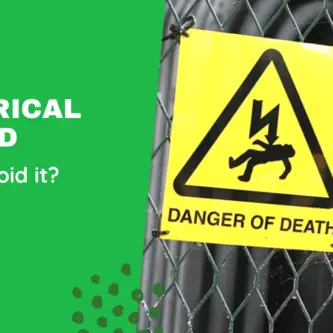Electric motors are used in various industrial and commercial applications to power machines and equipment.
These motors operate at high temperatures, and if not maintained properly, they can overheat, causing a safety hazard in the workplace.
In this article, we will discuss how electric motor overheating impacts workplace safety.
What causes electric motor overheating?
There are several reasons why an electric motor may overheat. These include:
- Lack of maintenance: Over time, dust and debris can accumulate in the motor, causing it to overheat. Inadequate lubrication can also cause friction, leading to overheating.
- Overloading: If the motor is operating beyond its capacity, it can overheat.
- Electrical problems: Issues such as low voltage, loose connections, or damaged insulation can cause the motor to overheat.
- Environmental factors: Excessive heat, humidity, or moisture can also cause the motor to overheat.
How does electric motor overheating impact workplace safety?
When an electric motor overheats, it can cause several safety hazards, including:
- Fire: If the motor gets too hot, it can ignite nearby combustible materials, causing a fire.
- Electrical shock: If the motor is not properly grounded or the insulation is damaged, it can cause electrical shock to workers who come into contact with it.
- Equipment failure: Overheating can cause the motor to malfunction or fail, which can cause other equipment to stop working or operate incorrectly.
- Fumes: If the motor is overheating due to insulation breakdown, it can release harmful fumes into the workplace.
How to prevent electric motor overheating?
There are several ways to prevent electric motor overheating, including:
- Regular maintenance: Regular cleaning and lubrication of the motor can prevent overheating due to dust and friction. Read my comprehensive article the role of Maintenance in workplace safety
- Monitoring: Install temperature sensors to monitor the motor’s temperature and shut it down before it gets too hot.
- Proper ventilation: Ensure that the motor is located in a well-ventilated area to dissipate heat.
- Overload protection: Install overload protection devices to prevent the motor from operating beyond its capacity.
- Electrical inspection: Regularly inspect the motor’s electrical components to ensure they are functioning properly.
What to do if an electric motor overheats?
If an electric motor overheats, it’s important to take immediate action to prevent a safety hazard. Here are some steps to take:
- Shut down the motor: Turn off the motor and disconnect it from the power source.
- Allow it to cool: Let the motor cool down before attempting to restart it.
- Inspect the motor: Check for damage or signs of wear and tear that may have caused the overheating.
- Seek professional help: If you are unable to identify the cause of the overheating, seek the help of a qualified electrician or technician.
you work With Electricity! Don’t leave empty-handed!
Looking to stay ahead of the game in the world of electrical engineering? Subscribe to my YouTube channel and gain access to exclusive content you won’t find anywhere else!
The staff I recommend (Amazon Affiliate Links to products I believe are high quality):
- Economy 120 Volt/60Hz AC Power Source – Step-Down Voltage & Frequency Converters 1800W
- UNI-T Digital Multimeter Tester UT139C
- 50-Amp Extension Cord for RV “100ft”
- Voltage Stabilizer 110/220v
- Hair Dryer “best selling“
- TOSHIBA EM131A5C-BS Countertop Microwave Ovens
Disclaimer: This contains affiliate links to Amazon products. I may earn a commission for purchases made through these links.


